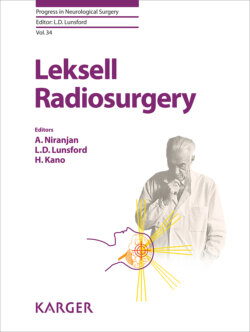Читать книгу Leksell Radiosurgery - Группа авторов - Страница 62
На сайте Литреса книга снята с продажи.
Metabolic PET Imaging
ОглавлениеPET allows for noninvasive measurements of tumor hypoxia, proliferation index, and markers of apoptosis [13]. PET imaging may be helpful in differentiating tumor regrowth from adverse radiation effects. This type of cellular and physiological information can be used in combination with MR imaging, which still has a relatively superior spatial resolution, to improve the delineation of target volume for radiosurgery. 11C-methionine-PET visualizes increased radiotracer uptake by a metabolically active tumor and can detect an increased cellular metabolism in brain tumors involving increased protein transport mediated by L-type amino acid carriers at the blood-brain barrier level compared with normal brain tissue. It can better differentiate tumor from background brain signals than 18F-labeled 2-fluoro-2-deoxy-D-glucose-PET, which is more difficult to interpret due to the high level of intrinsic glucose uptake in the brain. Levivier et al. [14] integrated stereotactic positron emission tomography with Gamma Knife planning on 57 tumor patients. There was abnormal positron emission tomographic uptake in 62 tumors, of which 69% demonstrated results that altered the MRI-defined tumor target. PET can be an important tool in detecting tumor growth from radiation necrosis. In select cases, PET images can be used for targeting the viable tumor using radiosurgery (Fig. 6)
Fig. 6. A 52-year-old woman presented with regrowth of an enhancing lesion after significant initial regression following radiosurgery of brain metastases. Initially she was managed conservatively with the presumed diagnosis of adverse radiation effects. A PET scan, however, showed increased metabolic activity in the lesion suggestive of tumor growth. She underwent repeat radiosurgery for this lesion. The radiosurgery dose plan was projected on axial contrast-enhanced MRI and PET images to ensure complete coverage. The 3-month follow-up MRI (right) showed significant tumor regression.
